constituent assembly of india debates (proceedings)- volume vii
constituent assembly of india debates (proceedings)- volume vii
constituent assembly of india debates (proceedings)- volume vii
You also want an ePaper? Increase the reach of your titles
YUMPU automatically turns print PDFs into web optimized ePapers that Google loves.
3. PARTIALLY EXCLUDED AREAS -<br />
The main feature <strong>of</strong> the Partially Excluded Areas is that they are not altogether excluded from the<br />
scope <strong>of</strong> the Provincial Ministries like the excluded areas nor is the expenditure on them outside the<br />
scope <strong>of</strong> the legislature. In fact the administration <strong>of</strong> the areas notably <strong>of</strong> the C. P. and Bombay has not<br />
been appreciably different from the rest <strong>of</strong> the province and the Provincial Governments were in greater<br />
or less degree opposed to their exclusion. It is in the Agency Tracts <strong>of</strong> Madras and Orissa and in the<br />
Santal Parganas that a different system prevails. A brief account <strong>of</strong> the areas <strong>of</strong> each province follows: -<br />
(a) Madras. - The partially excluded areas consist <strong>of</strong> the East Godavari Agency, the Polavaram taluq<br />
<strong>of</strong> West Godavari Agency. The total area is 6,792 square miles and the total population 493,006 <strong>of</strong> which<br />
about 278,000 are tribal, and 54,000 are classed as backward making a total percentage <strong>of</strong> 67.6. The<br />
tribes inhabiting these tracts are Koya, Koya Dora, Hill Reddy, Dombo, Kondh and others. The tribes are<br />
pretty backward on the whole and do podu (shifting cultivation) largely. Except manual labour they have<br />
no non-agricultural occupations worth mentioning. There are special agency rules and save for certain<br />
sections the Civil Procedure Code does not apply. Crime is scarce and the aboriginals are simple and<br />
truthful. The mechanism <strong>of</strong> justice therefore needs to be a simple one.<br />
There are no local self-governing bodies and tribal panchayats do not seem to be fit for work other<br />
than the decision <strong>of</strong> petty disputes. The toddy palm plays a large part in the life <strong>of</strong> aboriginals. They have<br />
suffered in the past through exploitation by moneylenders and landlords and incidents like the Rampa<br />
rebellion have occurred in the areas. Licencing <strong>of</strong> moneylenders, as agreed by the Collector <strong>of</strong> West<br />
Godavari, is probably a definite need <strong>of</strong> these parts in addition to the prevention <strong>of</strong> acquisition <strong>of</strong> land by<br />
non-aborigines.<br />
Yaws and malaria are very common in these parts.<br />
(b) Bombay. - The partially excluded areas which are to be found in the districts <strong>of</strong> West Khandesh,<br />
East Khandesh, Nasik, Thana, Broach and Panch Mahals cover an area <strong>of</strong> 6,697 square miles and contain<br />
a population <strong>of</strong> 1,125,471 <strong>of</strong> which 663,628 or 58.9 per cent are tribals. The tribes are largely Bhil, Varli,<br />
Kokna, Thakur and Katkari. In 1935, the Government <strong>of</strong> Bombay were not in favour <strong>of</strong> exclusion <strong>of</strong> any<br />
area except the Mewasi Chiefs Estates and the Akrani Mahal in the West Khandesh District on the ground<br />
that the administration <strong>of</strong> these areas was all along carried on in the same manner as the other tracts<br />
and that there were local self-governing institutions in the areas. The Akrani Mahal in the Satpura Hills is<br />
an almost purely Bhil area and probably the one with the least contact with the plains.<br />
In 1937, the Government <strong>of</strong> Bombay appointed Mr. D. Symington to conduct a special enquiry into<br />
the conditions prevailing in the aboriginal areas. Mr. Symington pointed out that the local boards were<br />
largely or even exclusively run by non-Bhil elected members and opined that it was not a mere question<br />
<strong>of</strong> providing seats for the hill tribes but that these people were not sufficiently educated and advanced<br />
either to use their votes sensibly or to produce from among themselves enough representatives capable<br />
<strong>of</strong> looking after their interests intelligently on local boards. "They are not only illiterate but also ignorant<br />
<strong>of</strong> everything outside their daily run. They are contemptuous <strong>of</strong> education which they regard as a<br />
degrading and senseless waste <strong>of</strong> time. They have more faith in witch-doctors than in pharmacopoeia.<br />
They live near the border line <strong>of</strong> starvation. They are inveterate drunkards. It was not surprising that<br />
they take no interest in the local boards elections or local board administration." He also expressed the<br />
opinion that the salvation <strong>of</strong> the aboriginal lay in pro-tecting him from exploitation by the moneylenders<br />
who were gradually depriving him <strong>of</strong> his land, and stopping the drink habit. Giving evidence before us, he<br />
reiterated the view that elections would be completely useless so far as these people were concerned.<br />
Among the Thadvi Bhils (Muslims) there is a Sub-Judge. Among the half dozen graduates from the<br />
Bhils there is Mr. Natwadkar, the M. L. A. from West Khandesh and there is a lady from the Panch


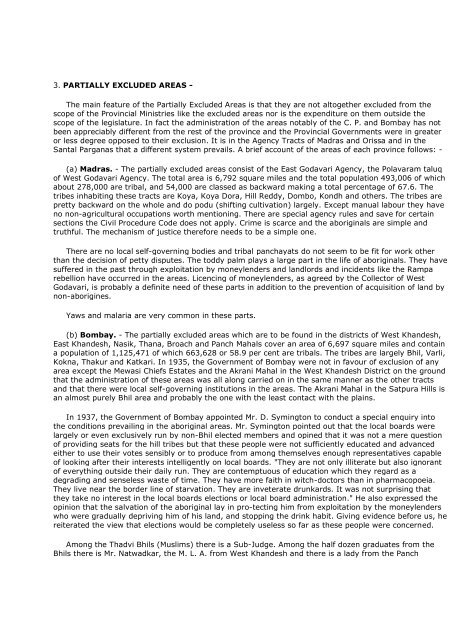
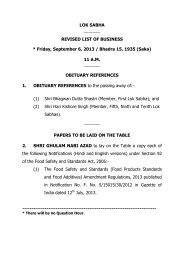
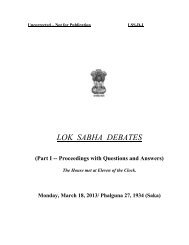

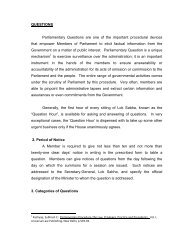
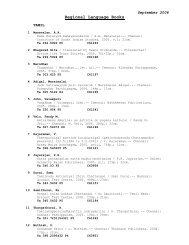

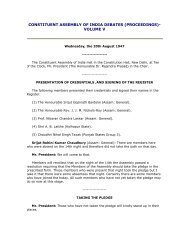
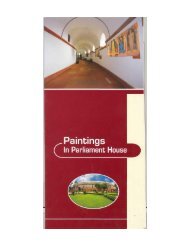
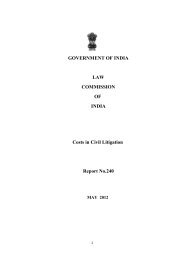
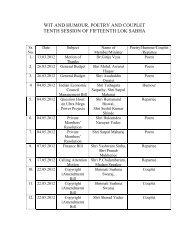
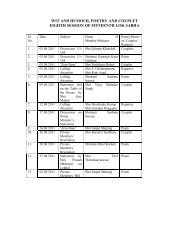

![gÉÉŌ A.]ÉŌ. xÉÉxÉÉ](https://img.yumpu.com/8015720/1/190x245/geeo-aeo-xeexee.jpg?quality=85)
